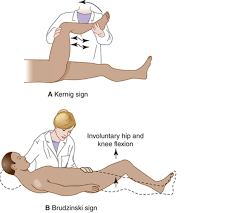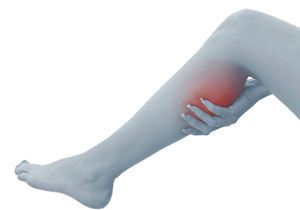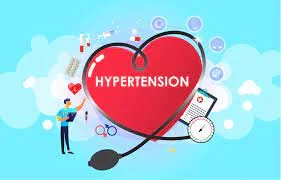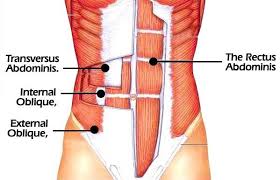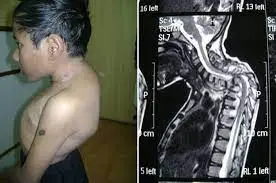Can Fibromyalgia Cause Chest Pain?
Table of Contents
Description
Fibromyalgia is a painful condition that is caused by chronic muscle and bone pain, tenderness, and fatigue. While symptoms differ from one person to the next, fibromyalgia pain may sometimes expand to the chest. This pain experiences like an intense stabbing sensation initially in the centre of the chest, around the breast bone and rib cage.
Fibromyalgia chest pains may be a frightening and painful experience because the chest pain may mimic a heart attack. the discomfort may be different according to how active a person is. If symptoms worsen, the person should look for medical attention.
Is it normal?
- An individual with fibromyalgia tends to have chronic pain, stiffness, and tenderness that radiates throughout the body.
- However it was once considered a noninflammatory illness, research from the past suggests that fibromyalgia is the cause of widespread inflammation that is not diagnosed by normal blood tests.
- If fibromyalgia-related inflammation affects the cartilage that connects the upper ribs to the breastbone, this may result in costochondritis.
- Fibromyalgia may also cause inflammation, pain, stiffness, and muscle spasms anywhere in the chest.
Pain locations and diagnosis
- There are 18 different fibromyalgia pressure points.
- To accurately diagnose this condition, the therapist put pressure on these points situated throughout the body to see if it hurts.
- The pressure points are grouped in pairs that extend from the back of the head to the inner parts of the knees.
- On the chest, these tender points touch the upper chest bone.
- Although, the patient may feel pain on the left or right sides of the chest.
- Fibromyalgia chest pain has also been referred to as costochondritis, a disease that inflames the cartilage connecting the ribs to the breastbone.
- Costochondritis normally causes pain in the rib cage and upper breast bone.
- Tenderness and aching may also extend to the shoulders and arms.
- If documented properly, these tender points are extremely helpful as a diagnostic tool, when evaluated in merged with other functional disorders like sleep disorders, fatigue, and cognitive symptoms.
What does fibromyalgia chest pain feel like?
Fibromyalgia is also known to cause universal pain extending throughout the body and sometimes the chest. These chest pains are often mentioned as:
- sharp
- stabbing
- intense
- inflamed or burning sensation
- mild ache or chronic
- knotted
- Tight
- This prohibitive sensation may affect the respiratory system, making it more difficult to breathe and causing shortness of breath.
Causes of fibromyalgia chest pain
Pain Signaling in the Brain
- To beginners, it might have to do with how the brain interprets physical sensation.
- Experts do not know the exact cause of fibromyalgia, but they do know that individuals with fibromyalgia have a much lower pain tolerance than other individuals.
- For example, even something as simple as a touch of the hand or a gentle massage could experience pain in people with fibromyalgia.
- Unlikely, any stress to the chest area — perhaps due to coughing, twisting the upper body, or low-level inflammation as the body tries to fight off a respiratory infection — might feel painful to people with fibromyalgia.
Inflammation and Costochondritis
- Inflammation is another possible link.
- Although doctors have debated whether fibromyalgia is actually an inflammatory condition, some research suggests that it does in fact play a vital role.
- A recent study conducted by scientists found that fibromyalgia patients have substantially higher levels of inflammation in the brain, and another study found evidence of systemic(body-wide inflammation) in individuals with fibromyalgia.
- Widespread inflammation could very well cause inflammation of the cartilage that associates the ribs with the breastbone(costosternal bones), which is known as costochondritis.
- If the chest hurts more when you press on it, the person might be dealing with costochondritis.
- This problem tends to get demolished on its own, but taking nonsteroidal anti-inflammatory drugs (NSAIDs)and alternating between icing the area and using moist heat might help reduce the discomfort in the meantime.
The main cause of fibromyalgia and its associated pain is unknown. Here are some factors that may come up with symptoms
- Heredity.
- Trauma or injury to the chest.
- Infections that affect how the nervous system responds to pain, or heighten the patient’s sensitivities.
- Low hormone levels — like dopamine and serotonin — prohibit communicating pain signals.
- Inflammation from the physical strain.
Symptoms of fibromyalgia chest pain
- The severity of symptoms will usually depend on the extent of inflammation.
- This is accurate for symptoms of costochondritis and chest-related fibromyalgia symptoms.
The pain described above may:
- worsen with movement, deep breathing, or pressure
- Come and go.
- Improve with shallow, steady breathing and rest.
- Starts in one place and radiates outward, impacting a larger area.
- worsen when stretching, bending, or twisting.
- Pain caused by costochondritis may be experienced either in the center of the chest or anywhere along the cartilage that runs between the sternum, breastbone, and ribs.
When to see a doctor?
- If chest pains persist or worsen, a person should consult their physician.
- Fibromyalgia tends to cause pain throughout the whole body, and chest pain will often happen with other symptoms.
A person should seek instant medical attention when chest pain occurs in isolation, or when it is skilled by:
- Severe pain, especially in areas that are not tender to the touch
- Severe pain that worsens over time
- Pain that becomes severe with exertion or exercise
- Coughing
- Fever
- Pain that goes upward, toward the arms and jaw
- Difficulty breathing
- Dizziness or light-headedness
- Excessive sweating
- Heartburn or indigestion
- Lower back pain
- Heart palpitations
- Trouble swallowing
- A rash
Medical treatment
- When chest pain is severe, long-lasting, disabling, or frequent, comprehensive treatment may be important.
Medications accepted for the management of fibromyalgia include:
- pregabalin (Lyrica) and gabapentin.
- some tricyclic antidepressants, specifically duloxetine (Cymbalta).some particular norepinephrine reuptake inhibitors, specifically milnacipran (Savella).
- Home remedies.
- Some lifestyle adjustments and natural remedies have been shown to reduce the symptoms of costochondritis and others associated with fibromyalgia.
Options for onset relief include:
- Resting.
- Applying a heating pad for 20-minute periods.
- Applying an ice pack wrapped in cloth for no more than 20 minutes at a time.
- Taking over-the-counter pain medication that does not disagree with prescription medication.
- Slowly stretching, mainly focusing on the muscles, ligaments, and tendons of the chest and the sides.
- Taking quiet, shallow breaths.
- It is relaxing as much as possible and remembering that the pain will eventually decrease.
- Reimagining the pain as a less unpleasant sensation like numbness or tickling.
Lifestyle adjustments that can help to decrease long-term symptoms include:
- Getting enough sleep and staying hydrated
- Eating a health-giving, balanced diet rich in fruits, vegetables, fiber, lean proteins, and whole grains.
- Avoiding or limiting the consumption of foods and drinks that cause inflammation, like preserved foods, red meats, rich or Spicy foods, and alcohol.
- Doing gentle exercises, like yoga, Pilates, walking, cycling, and swimming, and Engaging in mindfulness techniques, like meditation or guided visualization.
- Avoiding allergens, specifically food and airborne allergens.
- Alternative therapies some traditional and alternative medical therapies are mostly recommended to treat long-term symptoms, though limited scientific evidence can support their use.
Popular therapies with preliminarily evidence include:
- Physiotherapy
- Aerobic exercise
- Aquatic exercise
- Yoga
- Deep breathing exercise
- Tai – Chi
- chiropractic therapy-
1-Physiotherapy treatment-
- Manage the Symptoms Through ExerciseRegular, moderate exercise is an essential part of managing fibromyalgia.
- Reducing body mass index can actually decrease the risk of developing fibromyalgia.
- Research has shown that the following treatments may reduce pain and improve function, general health, and sleep in patients with fibromyalgia.
- Electrotherapy includes some modalities like Ultrasound therapy and Transcutaneous electrical stimulation.
- Reduce the pain
- Improve range of motion
- Aerobic exercise
- Aquatic exercise.
- Stretching.
- Strengthening exercise.
- Yoga.
- Tai chi.
- Deep breathing.
- Whole body vibration.
1-Reduce the Pain
- To reduce the pain, the physical therapist may select from a number of treatments:
- The therapist may use pressure on specific points of the muscle, followed by stretching or contracting the muscles, to reduce pain and make the muscles more flexible.
- The therapist also might use manual therapy techniques to help reduce the pain in the muscles and other connective tissues (the material between the cells of the body that support the organs and other tissues).
- In states where it is approved by the physical therapy practice act, the therapist might use an approach called “dry needling” to relieve the pain by inserting very thin wire-like needles into the affected areas of the muscle.
- Massage therapy may be used to improve blood flow to the tissues and give muscle relaxation to reduce muscle pain and stiffness, and break up scar tissue.
- Depending on the severity of the pain, the therapist might decide to use electrical stimulation to help relieve the pain.
- Most people find that portable electrical stimulation devices help them manage severe pain independently.
- The physical therapist will work with the patient to help determine if this type of treatment makes sense for the patient.
2-Stretching exercise-
- The patient does not have to blow up in a sweat in order for exercise to be useful.
- For example, try Gentle stretching relaxation exercises to maintain good posture.
- Be careful not to overdo it. It good is to stretch tight muscles after the patient has done some light aerobic exercises to warm up.
- This will help them avoid injury. Here are some other tips for healthy stretching:
- Move gently.
- Never stretch to the point of pain.
- Hold the light stretches for up to a minute to get the best improvement.
- Here are some best stretching to ease fibromyalgia-
Can opener for back and shoulders
- Stand with feet shoulder-width apart. Reach arms overhead and cling to hands together, fingers interlaced and palms facing outward.
- Propel both palms together and squeeze elbows inward as if trying to pop a balloon, keeping shoulders down and neck straight.
- Return to starting position.
- Do 10 reps.
Shoulder rolls

- Shoulder RollStand with shoulders relaxed, arms at my sides, and back straight.
- Slowly roll both shoulders as regards to ears and back towards the rear. Relax the neck and roll forward, returning to starting position.
- Do 10 reps, go after a set of the side bend exercise. Repeat this roll 2 to 3 times.
- (Relax the tight shoulders with these simple yoga poses.)
Huggers

- Stand with both feet together and arms outstretched.
- Slowly muffle arms around the torso in a hugging motion, with the right arm above the left.
- Extend the arms as wide as possible. Repeat this, with the left arm above the right.
- Do 10 reps.
Downward-facing dog

- Downward-facing dogs begin with hands and knees, hips in line with knees, and shoulders in line with hands.
- Resolute through hands, lift knees off the floor, and straighten legs, pushing butt in the air.
- (Can not o it? Try this alteration.) Align ears with arms and put the head facing the floor.
- Maintain this pose for 4 seconds, breathing deeply.
3- Strength training-
- Strength training may significantly increase the quality of life for people with fibromyalgia.
- Strength training incorporates resistance exercises and weight lifting.
- It is crucial to improve the intensity slowly and use light weights. Begin as low as 1 to 3 pounds.
On daily basis, strength training can result in a significant reduction in:
- Pain
- Fatigue
- Tender points
- Depression
- Anxiety
2-Aerobic exercise

- Research has frequently shown that regular aerobic exercise upgrades pain, function, and overall quality of life in the individual with fibromyalgia.
- Many therapists prescribe gentle aerobic exercise as the first line of treatment for fibromyalgia.
- This is prior to any type of medication being considered.
- Even if the doctor prescribes medication for the condition, it’s necessary to be active.
- If it is too painful or the patient is too tired to exercise, the patient can begin with walking, moving in a swimming pool, or other gentle activities.
- If the patient does this on a daily base, they can build their strength and endurance over time Aerobic exercise mainly includes walking and its modification like nordic walking.
3-Aquatic exercise-
Pool exercise
- Warm water and light exercise make for a soothing combination to help to reduce the pain of fibromyalgia.
- Too many different studies have shown that it gives a lot of benefits.
- Researchers say it may help:
- Increase pain threshold (the point at which sensation becomes painful) and Reduce tender-point counts.
- Reduce pain.
- Boost cognitive function and improve functional capacity.
- Improve mental health.
- Decreased body fat makes the patient perceive their condition as fewer severe studies also manifest that patients with FMS are able to tolerate warm-water exercise better than some other forms of exercise.
4- Yoga-

- Yoga may help the patient in too many ways, but the most important benefit of doing yoga are
- Improve the quality of life
- Reduce pain
- Increase overall activity of the body
- Improvement breathing function
- There are some yoga-like side bends,bhujangasana, savasana, cobra pose, etc.
5-Deep breathing exercise-
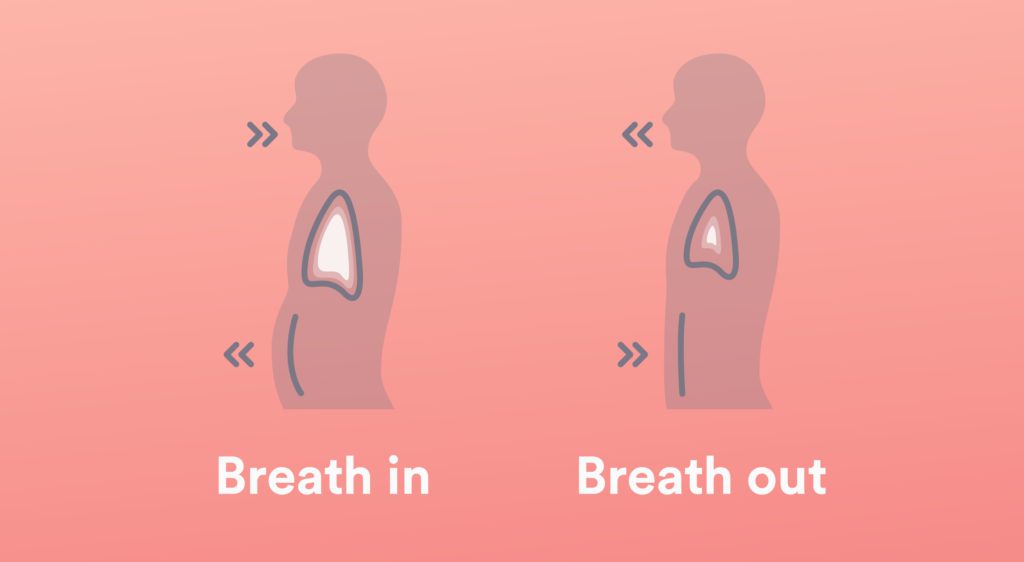
- The Relaxing BreathThis technique is also called 4-7-8 to remember how to perform it – puts the patient in a relaxed state.
- Maybe that is why it works to reduce the pain, too.
- The position is not as necessary as breathing itself so just get comfortable! Sit with the back against the wall or lie down with a pillow under the knees, head on a pillow.
- To start, exhale completely through the mouth.
- It should sound a little like a whooshing sound.
- With your mouth closed, inhale slowly through the nose to a count of 4.
- Hold that breath to a count of 7.
- Exhale completely through your mouth, this time to a count of 8.
- The 4-7-8 sequence is ONE breath.
- Inhale once more and repeat 3 more times for a total of 4 breaths.
- Take time throughout the entire day to repeat the 4breath sessions.
6-Tai- chi-
- This mind-body technique includes deep breathing, meditation, and controlled movements.
- Tai chi may improve muscle strength, balance, and stamina.
- It is not strenuous, but a person can develop sore muscles or sprains if they overdo it.
7-chiropractic therapy-
- Treating Fibromyalgia With Chiropractic
- Chiropractic care is analytic for those who suffer from fibromyalgia in order to keep the spine and muscles from losing too much movement. Because fibromyalgia causes the muscles to tighten up and decrease some of their natural pliability, it affects a global loss of movement in the spine.
- The loss of movement in the spine results in a neurological reflex that causes the muscles to tighten more distant.
- This vicious cycle will continue and over time will lead to improved pain, increased muscle tightness, a loss of movement, more difficulty sleeping, and the development of more and more trigger points.
The important ways chiropractic care benefits those who suffer from fibromyalgia are:
Reduces pain levels
- The most troubling issue to deal with for fibromyalgia sufferers is the constant pain, which often affects the whole body for weeks or months at a stretch.
- However these patients initially seek care for the pain they’re experiencing, and they soon experienced that chiropractic also helps bring back overall health and aids the body in self-healing.
- By adjusting the spine to increase alignment, as well as adding some form of soft tissue work, chiropractors may assist fibromyalgia patients in reducing their painful tender points.
- Many who suffer from this condition look for relief with chiropractic treatment options and experience declination in the tender spots.
Improve range of motion
- Chiropractors are also able to modify the body’s joints and help loosen them.
- For fibromyalgia patients, this may sometimes increase their range of motion and permit them to move more easily.
- Sometimes it takes too many treatments to look for a significant outcome, so it is necessary to note that chiropractic treatment of fibromyalgia takes a commitment from the patient.
- The effects, although, are well worth the time invested.
Improve sleep quality
- A common by-product of the pain associated with fibromyalgia is not taking enough sleep.
- As anyone knows, being not able to snag several hours of sleep may leave them feeling tired, foggy, and irritable.
- By working with a chiropractor to loosen their joints and manage their tender points, patients suffering from this condition may enjoy a deeper sleep, and stay asleep longer time.
Outlook
- The chronic pain condition fibromyalgia may the cause of cause sharp, stabbing pain in the chest.
- The doctors may properly diagnose this condition, but treatment options are not enough because there is no known cause of fibromyalgia.
- If a person experiences a sudden onset of sharp chest pain and tightness of breath.
FAQ
Fibromyalgia itself can also impact negatively cardiac outcomes in CCF patients, as pain stimulates the sympathetic nervous system and improve cardiac workload. In the end, FM is a common comorbidity in chronic disease patients, including those with CCF.
(Tender points are 18 spots on the body that are used to diagnose fibromyalgia.) Myofascial pain syndrome, which is normal in people with FMS, also could be a cause. Costochondritis is typically a minor injury, but it may take several weeks or months to resolve.
If the patient has fibromyalgia, one of the main symptoms is likely to be widespread pain. This may be felt throughout the body but could be worse in certain areas, like the back or neck. The pain is likely to be continuous, although it can be better or more severe at different times.
Most severe symptoms. The pain from fibromyalgia may be intense, constant, and severe enough to keep the patient home from work and other activities. In the past National Health Interview Survey, 86.6% of participants with fibromyalgia reported having pain on most days or every day of their lives.
Typically few patients with fibromyalgia also feel the dryness of the cornea or eyes and mouth. The presence of ocular discomfort or eye dryness and grittiness is one of the more common complaints of fibromyalgia as compared to oral or mouth dryness.



